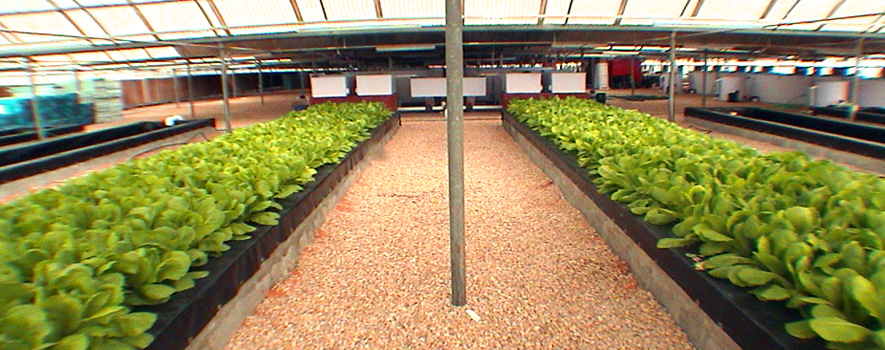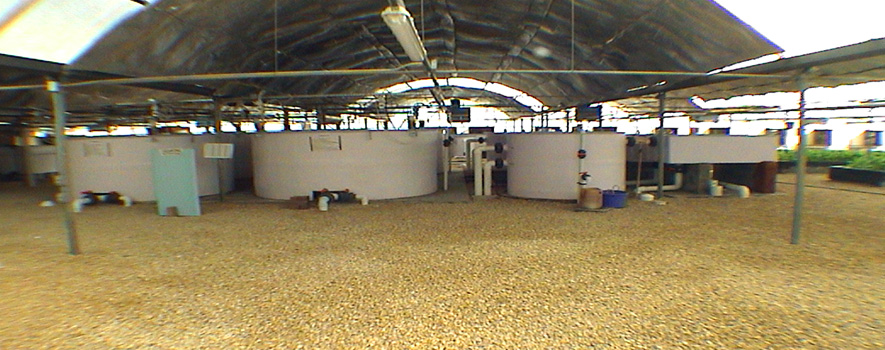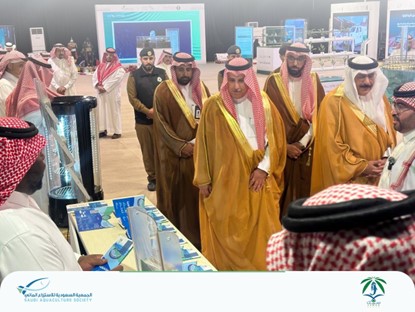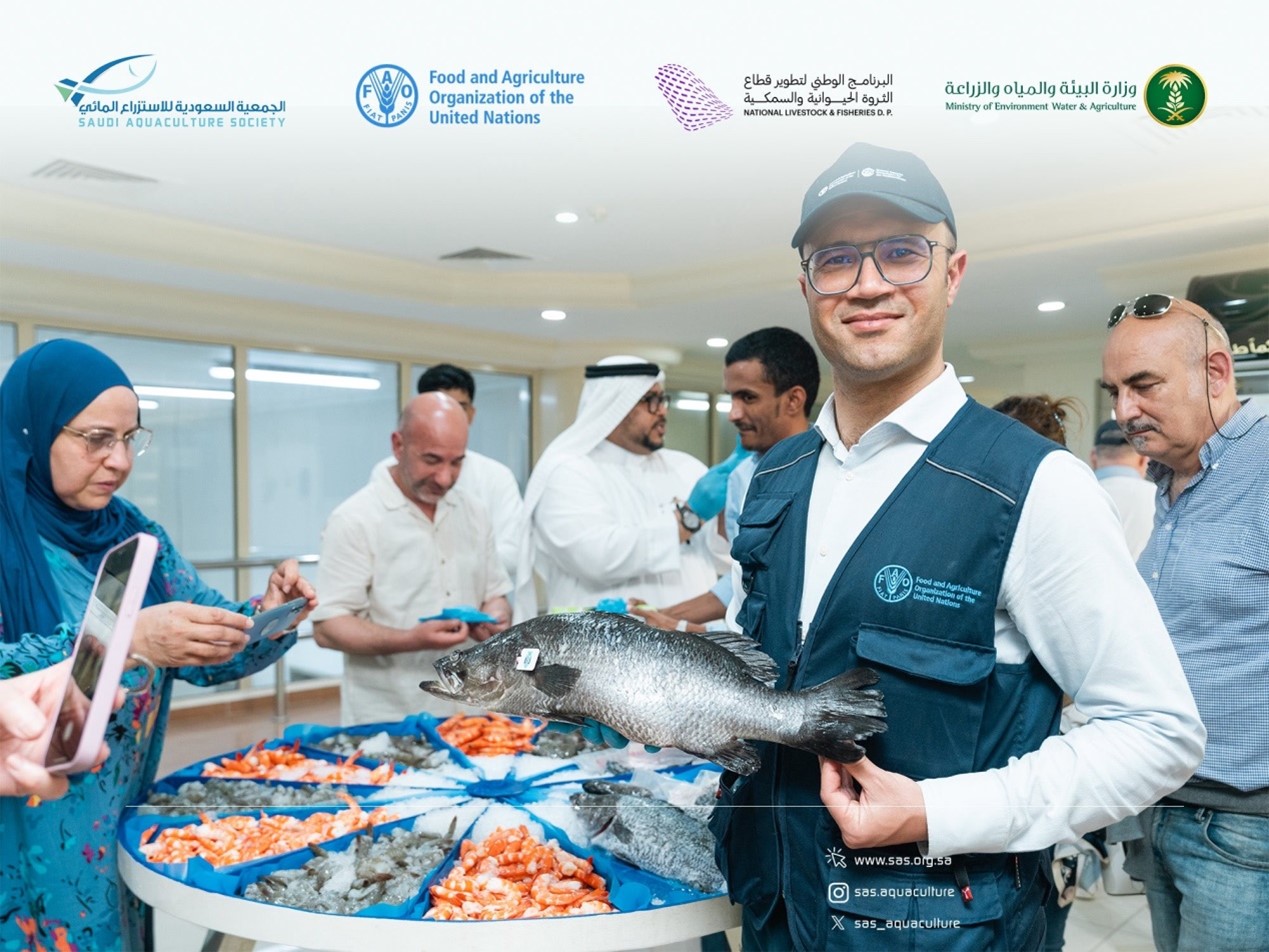
Aquaponics
Aquaponics is one of the production systems that falls under the aquaculture sector. It is, in fact, a hybrid production system between Aquaculture and Hydroponics and deals with growing plants in water only without soil.
The system has spread dramatically around the world due to many features which characterize it from other farming systems, especially the saving of water consumption and limited size of space used in the system. It formed a new phenomenon for many people due to the ease of setting it up anywhere even inside the houses with ornamental tanks.
Today, aquaponics system is perceived as one of the future systems that are expected to spread widely due to the advantages mentioned above, and the people’s desire to produce healthy organic products to satisfy their needs, in addition to recreation and entertainment.
In this report, we will deal with the system, its definition and advantages, and some technical information related to it, as well as touching on some of the most important experiments carried out on the system in the Kingdom of Saudi Arabia
Definition of aquaponics system:
Aquaponics system can be defined as a hybrid culture system that combines between traditional aquaculture systems and hydroponics, which is agriculture in water without soil. The system allows the production of aquatic organisms with vegetable crops at the same time.
Components of the systems:
One of the main characteristics of the system is its ease and lack of complications in its design. The key components of the system are fish rearing tanks and plant culture area, which can usually be, either pipes or rectangular water raceways, with some basic equipment, such as water pumps, tubes and aeration pipes.
Characteristics of the System:
Rationalization of water consumption:
The ability of the system to save water consumption, both with regard to the cultivation of vegetable crops by regular irrigation methods, or fish farming by the traditional culture systems forms one of the most important characteristics. Many of the published results on this system had demonstrated its ability to save a large amount of water of up to 90%. This means that, through this system, only 10% of the amount of water can be consumed to produce the same amount of plants and fish produced by the conventional methods.

Hence, this feature is one of the main reasons why the Saudi Aquaculture Society in cooperation with other concerned authorities, especially the Aquaculture Department of the Ministry of Agriculture intend to give more attention to this technology and investigate the possibility of establishing pilot projects to help improve the production efficiency of fresh water fish farms which face major problems in several cases due to the lack of water as a result of using traditional open systems of fish farming, which has, in turn, lead to wasting large amounts of water, in contradiction to the directions of the Saudi Government to rationalize water consumption.
The recycling of water and control of the system have other repercussions, not only in saving water consumption, but also by providing more control over the production of new crops which may not be produced by the conventional methods, and in places which may not be suitable for cultivation.
The diversity of production options:
Unlike separate traditional methods of agriculture and aquaculture, this system allows dual production of fish and plants. So, during a single production cycle, it is possible to get fish products, as well as cultivating leafy- plants at the same time, and with the same effort and operating costs. This is not limited only to production options, but also extends to the quality of the product. Through this system, it is possible to obtain high quality organic agricultural crops, as they originally derive their nutrients from the water resulting from fish culture ponds without adding any fertilizers or chemicals.
There is a promising future for this technology in the Kingdom. This is due to the features discussed above, as well as the speed of the spread of its global use. In this report, we will review a unique experience which is worth to be taken as an example that can be made use of. This experiment is the first of its kind in the Kingdom of Saudi Arabia and aimed to study Aquaponics Technology. The experiment was carried out by King Abdulaziz City for Science and Technology.
A trial on integrated technology on the culture
of fish and plants in closed water recycling system (Aquaponics)
In 2008, Dr. Yousef Al-Hafid and the research team from the Environment and Natural Resources Research Institute of King Abdulaziz City for Science and Technology conducted the first research of its kind in the Arab world by carrying out an experiment on the system entitled “Integrated culture of Fish with plants in a closed system to recycle water”. The experiment was conducted in the research station of KACST in Mizahmiah.
The idea of the research focuses on testing the possibility of applying the Aquaponics system in the local environment and integrating fish production with plant in the water recycling system.
Construction and technical aspects, as well as the design of the experiment will not be addressed in this report, but can be obtained in more detail by downloading the research paper published about this experiment.
During the experiment the species to be cultured were determined, whether fish or plant. Tilapia (Oreochromis niloticus) was chosen because it is considered one of the best fishes to be used in the aquaponics system, for several reasons, such as ease of rearing and breeding, and their ability to withstand different culture conditions, resistance to diseases and low food conversion ratio.
As for the selected plants, the trial focused on the use of lettuce, one the well known types of vegetables, and selection factors, like short culture period and high market value were considered. Generally, the leafy vegetables or other vegetables that have the same characteristics are most suitable for this system.
Results and technical features that were obtained:
Several encouraging features of this experiment were published and the results demonstrated the ability of the system, if it is properly applied, to achieve increased productivity, whether from fish or plants, as it was possible, through this system, to increase fish production and save water used in fish farming to more than 95%.
Also, in the same fish production cycle, it was possible to obtain an additional production of lettuce plants, with 4 time increase in productivity, as compared to the productivity per acre in traditional culture methods, and the production of high-quality organic plants without the addition of any fertilizers or chemical pesticides..
As regards the preservation of the environment and the application of bio-security and safety measures, the experiment recorded positive results in these aspects, whereas the plant roots acted as bio-filters in the treatment of water. Toxic nutrients, like ammonia, were converted into non-toxic compounds, thus saving the costs of adding bio-filters to the fish farming unit. The plants also contributed to increasing the oxygen content of the water and removal of carbon dioxide. Moreover, the system provided full control of the farm and protected it from diseases, thus promoting bio-security and safety measures.





.jpeg)